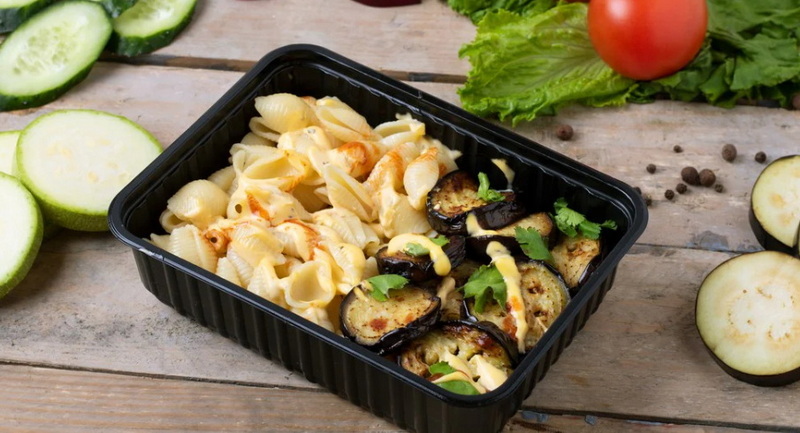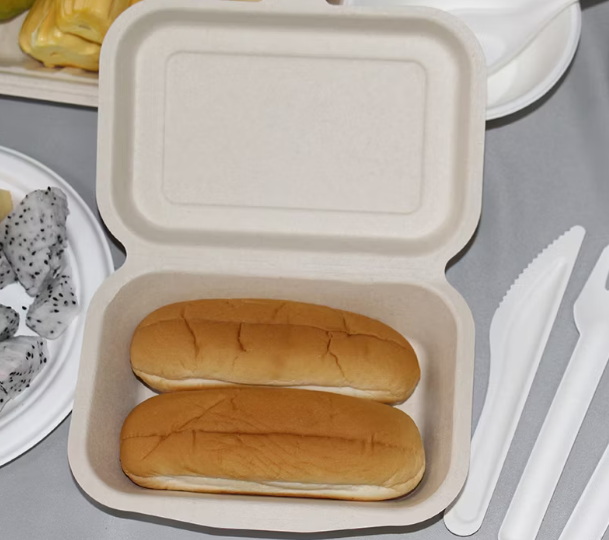
Content Menu
● Introduction to Disposable Lunch Boxes
>> Health Risks Associated with Disposable Lunch Boxes
>>> Chemical Leaching in Plastic Containers
>>> Health Impacts of Chemical Exposure
>> Environmental Impact of Disposable Lunch Boxes
>>> Environmental Concerns
● Alternatives to Disposable Lunch Boxes
>> Reusable Containers
>> Eco-Friendly Disposable Options
● Insulated Containers for Hot Food
>> Tips for Using Insulated Containers
● The Future of Eco-Friendly Packaging
>> Advantages of Biodegradable Containers
● Conclusion
● FAQ
>> 1. What are the health risks associated with using disposable lunch boxes for hot food?
>> 2. How can I safely store hot food without using disposable lunch boxes?
>> 3. What are some eco-friendly alternatives to disposable lunch boxes?
>> 4. Can I microwave food in a plastic container?
>> 5. How can I reduce waste from disposable lunch boxes?
● Citations:
In recent years, the convenience of disposable lunch boxes has become increasingly popular, especially for hot food. However, concerns about their safety have also grown. This article will delve into the safety aspects of using disposable lunch boxes for hot food, exploring both health and environmental impacts.

Introduction to Disposable Lunch Boxes
Disposable lunch boxes are made from various materials, including plastic, foam, and paper. They offer a quick and easy solution for packaging and consuming hot meals on the go. However, the convenience comes with potential risks, particularly when it comes to chemical leaching and environmental impact.
Health Risks Associated with Disposable Lunch Boxes
When hot food is placed in disposable lunch boxes, especially those made from plastic or foam, there is a risk of chemical leaching. These chemicals can include bisphenols (such as BPA) and phthalates, which are known endocrine disruptors and have been linked to various health issues, including reproductive problems and cancer.
Chemical Leaching in Plastic Containers
Plastic containers, particularly when heated, can release harmful chemicals into food. This is more pronounced with hot, oily, or acidic foods, which can increase the rate of chemical migration. For instance, BPA and phthalates are commonly found in plastics and can leach into food, posing significant health risks.
Health Impacts of Chemical Exposure
Exposure to these chemicals has been associated with a range of health issues, including:
- Endocrine Disruption: Interference with hormone systems, leading to reproductive issues and developmental problems.
- Carcinogenic Effects: Increased risk of cancer.
- Neurodevelopmental Issues: Potential effects on brain development, particularly in children.
Environmental Impact of Disposable Lunch Boxes
Beyond health concerns, disposable lunch boxes also have significant environmental implications. They are not reusable and contribute to the massive waste stream, ending up in landfills and oceans.
Environmental Concerns
- Waste Accumulation: Millions of tons of disposable containers are discarded annually, polluting the environment and harming wildlife.
- Lack of Durability: Disposable lunch boxes are prone to breaking or tearing, which can lead to food waste and additional environmental harm.
Alternatives to Disposable Lunch Boxes
For those concerned about both health and environmental impacts, there are safer alternatives available:
Reusable Containers
- Glass Containers: Ideal for storing hot food without chemical leaching risks.
- Stainless Steel Containers: Durable and safe for hot foods.
- Silicone Containers: Flexible and safe for microwave use.
Eco-Friendly Disposable Options
- Biodegradable Containers: Made from plant-based materials, these are more environmentally friendly than traditional plastics.
- Paper Containers: Though not as durable, they are a more sustainable option than plastic or foam. However, some paper containers may be lined with chemicals like PFAS, which can also leach into food when heated.

Insulated Containers for Hot Food
Insulated containers are an excellent option for keeping hot food safe and warm. These containers can maintain food at a safe temperature for several hours, reducing the risk of foodborne illness.
Tips for Using Insulated Containers
1. Preheat the Container: Fill the insulated container with boiling water, let it stand for a few minutes, then pour out the water before adding hot food.
2. Maintain Temperature: Ensure the food is heated to at least 165°F before placing it in the container.
3. Keep It Closed: Seal the container tightly to maintain the temperature until lunchtime.
The Future of Eco-Friendly Packaging
As consumers become more aware of the environmental and health impacts of disposable packaging, the demand for eco-friendly alternatives is growing. Biodegradable lunch boxes, made from materials like bamboo and bagasse, are becoming increasingly popular. These materials are not only sustainable but also durable enough to handle hot meals without leaching harmful chemicals.
Advantages of Biodegradable Containers
- Sustainability: Biodegradable containers reduce waste and minimize environmental harm.
- Health Safety: They do not contain harmful chemicals like BPA or PFAS, ensuring food remains safe.
- Durability: Some biodegradable containers can maintain heat for extended periods, making them suitable for office lunches.
Conclusion
While disposable lunch boxes offer convenience, they pose significant health and environmental risks. For safer and more sustainable options, consider using reusable containers or eco-friendly disposable alternatives. By making informed choices, we can reduce our exposure to harmful chemicals and contribute to a cleaner environment.

FAQ
1. What are the health risks associated with using disposable lunch boxes for hot food?
Disposable lunch boxes, especially those made from plastic or foam, can leach harmful chemicals into hot food. These chemicals, such as BPA and phthalates, are linked to endocrine disruption, cancer, and neurodevelopmental issues.
2. How can I safely store hot food without using disposable lunch boxes?
Use insulated, reusable containers like glass or stainless steel. These materials do not leach chemicals into food and are safe for hot meals. Preheat the container with boiling water before adding food to maintain temperature.
3. What are some eco-friendly alternatives to disposable lunch boxes?
Consider biodegradable containers made from plant-based materials or paper containers. However, be aware that some paper containers may contain harmful chemicals like PFAS.
4. Can I microwave food in a plastic container?
It is generally not recommended to microwave food in plastic containers due to the risk of chemical leaching. Opt for microwave-safe glass or ceramic containers instead.
5. How can I reduce waste from disposable lunch boxes?
Switch to reusable containers for daily use and reserve disposable options for emergencies. Properly dispose of disposable containers to minimize environmental impact.
Citations:
[1] https://www.usda.gov/about-usda/news/blog/use-insulated-lunch-bag-keep-meals-safe
[2] https://www.eco-harvest.com/blogs-detail/--38
[3] https://www.canecart.in/2024/11/25/hot-meals-cool-packaging-the-eco-friendly-future-of-office-lunches/
[4] https://www.chemicalsafetyfacts.org/health-and-safety/keeping-lunch-cool-the-chemistry-of-lunch-boxes/
[5] https://www.quitplastic.in/post/the-hidden-dangers-of-single-use-paper-food-containers
[6] https://noissue.co/blog/what-is-the-environmental-impact-of-takeaway-food-containers/
[7] https://www.quebec.ca/en/health/nutrition/food-safety-risk-prevention/food-safety/food-storage/precautions-lunch-boxes
[8] https://www.bbc.co.uk/food/articles/are_plastic_food_storage_containers_safe
[9] https://myneemoe.in/blogs/news/tiffin-boxes-and-sustainability-reducing-waste-one-meal-at-a-time
[10] https://www.usda.gov/about-usda/news/blog/pack-it-safe-pack-it-smart-back-school-lunchbox-packing-essentials
[11] https://www.cfs.gov.hk/english/multimedia/multimedia_pub/multimedia_pub_fsf_20_04.html
[12] https://www.wastereduction.gov.hk/en/schools/green_lunch.htm
[13] https://nestasia.in/blogs/news/how-to-keep-meals-safe-with-an-insulated-lunchbox
[14] https://kupaa.co/blogs/news/takeaway-hot-food-plastic-containers
[15] https://www.packnwood.com/blog/list-of-single-use-foodservice-containers-and-their-impact-on-the-environment/
[16] https://www.cfs.gov.hk/english/programme/programme_haccp/programme_haccp_lunchbox_school.html
[17] https://www.cfs.gov.hk/english/programme/programme_haccp/programme_haccp_lunchbox_trade.html
[18] https://guidingstars.com/nutrition-science/food-safety-for-the-lunchbox-brigade/
[19] https://lunchinabox.net/2007/05/food-safety-for-packed-lunches-updated/
[20] https://homepuff.com/blogs/blog/how-to-keep-meals-safe-with-an-insulated-lunchbox

















